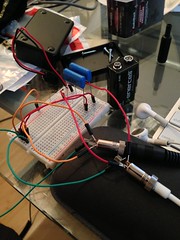
by Schill
Electromechanical Relays – Some Must Know Facts
About Electromechanical Relays Components and Its Product Range:
A relay, in general, is just an electrically operated switch. They are used in the essential functions of controlling circuits through the use of low power signals. There are many types of relays that have been produced over the years, including some that are still in use today. Relays were first introduced in the applications of long distance telegraph circuits, telephone exchanges, and early computers. Types of relays include the following: latching relay, reed relay, mercury-wetted relay, mercury relay, polarized relay, machine tool relay, ratchet relay, coaxial relay, contactor, solid state contactor relay, buccholz relay, forced-guided contacts relay, overload protection relay, and vacuum relays. Some of the more frequently and currently used relays are probably solid state relays and contactors. Contactors, although they are not usually referred to as relays, are essentially heavy-duty relays that are used in switching electric motors, in addition to use in controlling lighting, heating, capacitors banks, thermal evaporators, and electrical loads. Ratings for most contactors range anywhere between 10 amps to a few hundred amps and have a much higher current ratings than usual relays. A solid state relay (SSR) works similarly to an electromechanical relay except for its lack of moving components, which makes it more reliable in the long-run. Solid state relays that are designed to handle up to 1,200 amps are available for purchase commercially. Some disadvantages as opposed to electromechanical relays are that they are prone to damage due to exposure to extreme cosmic rays and EMP episodes.
This brings us to our next discussion in which we will focus on strictly electromechanical relays and their use in the industry today. A basic electromechanical relay is just a coil that is wrapped around an iron core. A magnetic field is generated when electric current passes through the coil, which activates a movable iron armature, causing a connection with a fixed contact to either be made or broken. These are usually produced for low-voltage applications that reduce noise. Their main advantages are that they are good for general purpose switching, have consistent contact resistance, have many variations, allow high power switching, and allow RF/microwave switching. On the other hand, disadvantages are that they are not ideal for low thermal and low voltage switching.
They can be used for any number of applications, including amplifying a digital signal, controlling high-voltage circuits, controlling high-current circuit, detecting and isolating faults with transmission and distribution, logic functions, time delay functions, vehicle battery isolation, and switching to standby power supply, including additional applications than the aforementioned. There are several factors to take into consideration when selecting relays for each particular application. The number and type of contacts, contact sequence, rating of contacts, voltage rating of contacts, operating lifetime, coil voltage, coil current, package/enclosure, operating environment, assembly, mounting, switching time, contact protection, coil protection, isolation between coil contacts, expected mechanical loads due to acceleration, size, accessories, and regulatory approvals. This is an extensive although not an exhaustive list of considerable factors so keep these in mind when evaluating requirements for selecting appropriate relays.
You can browse on web for leading distributor of all types of Electromechanical Relay components from a comprehensive list of manufacturers. On this sites where you can get tier 1 pricing from manufacturers which pass selected savings to you.
